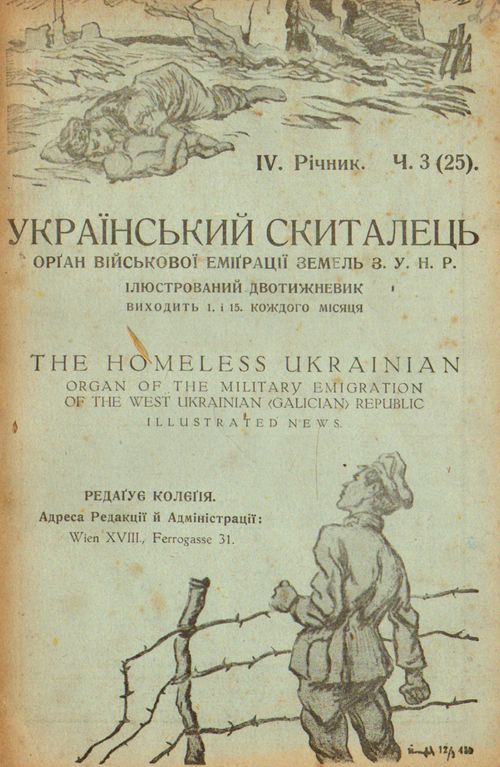“Ukrainian writer-semigrants”
The Central State Archives of Foreign Ucrainica opened an exhibition of this name on February 21 to show its rarities
Employees of the Central State Archives of Foreign Ucrainica (TsDAZU) have prepared this exhibition which highlights the formation, development, and peculiar features of the Ukrainian emigre literature in the 20th century.
The Ukrainian literary process in emigration is a historical and artistic phenomenon that took a peculiar shape in the 20th century due to historical events of two world wars. That is why we can distinguish two periods in the Ukrainian writers-emigrants’ creative work. The first of them encompasses the so-called Prague School’s activity in Europe of the 1920s and 1930s. Its members included prominent public, political, and cultural figures, such as Yevhen Malaniuk, Olena Teliha, Oleh Olzhych, and Antin Pavliuk. The main basis for the Prague School’s formation and the subsequent development of ideological currents in the emigre literature was created by journalistic and literary activities of former soldiers of the Ukrainian People’s Republic’s Army and the Ukrainian Galician Army, held in internment camps in Czechoslovakia and Poland in the early 1920s. It is appropriate to recall here the literary and artistic association “Rainbow,” created in the Polish internment camp in Kalisz, which included Malaniuk, Pavliuk, and Blakytny among its members.
Characteristically for the interwar period, Ukrainian public and political figures published historical essays, memories of then-recent events of the national liberation effort of 1917 to 1921, and so on. The emigre literature of the 1920s and 1930s had as its common theme the hope for a speedy return to the homeland and its revival. This can be seen in the works held by archival and library collections of the TsDAZU, authored by poet and literary critic Olena Teliha; poet Oleh Olzhych; writer and journalist Dmytro Herodot; and poet, novelist, playwright, and essayist Vasyl Grendzha-Donsky.
The second period includes those Ukrainian writers who influenced the literary process after the Second World War. They were talented Ukrainians who lived in camps for displaced persons in Germany. It was in Germany that they founded the Artistic Ukrainian Movement and worked within it. Its members included prominent poets and writers, like Yevhen Malaniuk and Petro Holubenko, who later emigrated to the US.
Those who moved to the US and Canada grouped around the Ukrainian Writers’ Association “Word.” The development of the Ukrainian emigre literature in the second half of the 20th century is represented in the exhibition through the works of poet, critic, writer, member of the “Word” association Petro Holubenko and poet Natalia Zamoulko-Dubouchet, who lives in France.
Writers-emigrants of the second half of the 20th century tended to cover the Ukrainian life abroad, seeing that multiple generations of Ukrainians were born in foreign parts. At the same time, memories of the Ukrainians’ heroic past still remained a popular topic with them.
The exhibition will run till March 20.
Newspaper output №:
№12, (2015)Section
Culture





